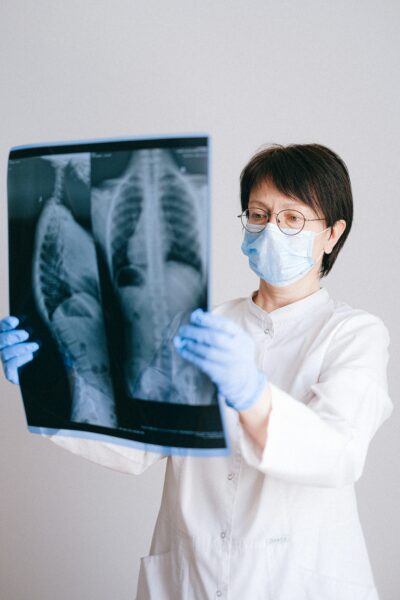The Role of Respiratory Therapists in the ICU

6/15/23
A respiratory therapist is a crucial role on every medical team. In an intensive care unit (or ICU), respiratory therapists find themselves a part of a dedicated team of doctors, nurses, and other medical professionals who are prepared to help save lives. Any respiratory therapist job, regardless of which medical department they are a part of, is an essential addition, but in the ICU the role of a respiratory therapist is even more important. With patients in critical condition, a respiratory therapist helps to monitor patients and make sure they achieve a proper recovery.
What are the Responsibilities of a Respiratory Therapist in the ICU
Ventilator Management
A crucial respiratory therapist’s role is to make sure the mechanical ventilators are delivering an adequate amount of support to the patient. There are numerous aspects to take into consideration when monitoring the ventilator machine, such as assessing oxygenation, reviewing the patient’s progress, and adjusting the ventilator settings properly when it seems fit. The goal of ventilator management is to synchronize (to the best of your abilities) the ventilator breaths with a patient’s spontaneous breathing patterns.
Bronchoscopy Assistance
A procedure allowing a doctor to look at your lungs and assess air passages, the role of a respiratory therapist during bronchoscopy is to assist. The procedure is done by having a thin tube (known as the bronchoscope) pass through your nose or mouth and down your throat into your lungs. A bronchoscopy can be recommended for patients for a variety of reasons, such as if you have an infection or there is a need for further investigation of something found on a chest x-ray.
Administering Specialized Gas
To make sure some in the ICU’s breathing is properly regulated, a respiratory therapist’s job will involve a form of medical gas therapy. As one of the more common respiratory therapist responsibilities, gas therapy allows more gas, such as oxygen, to be sent to the bloodstream. For patients who are in the ICU, medical gas therapy can be a lifesaving procedure. Some medical gasses, such as nitrous oxide, can be naturally produced as molecules that help the immune system fight against pathogens and infections.
Hemodynamic Monitoring
An important aspect of the ICU is monitoring patients and assessing how and why their conditions have improved, deteriorated, or stabilized. As a respiratory therapist, one job is to contribute to this monitoring by checking patients’ blood circulation and evaluating how well the heart is working. This procedure is called hemodynamic monitoring. Using nuclear imaging–imaging scans–a respiratory therapist can discover if there is a temporary decline of blood to the brain, a change in blood volume or distribution, or if there is a condition pertaining to your nervous system. This is a respiratory therapist’s role that can’t be ignored, and in doing so you can use a variety of tools to assist, such as a blood pressure monitor, an echocardiogram, or an EKG monitoring machine.
Where Can Respiratory Therapist Schooling Teach You How to Save Lives?
If you want to be part of something bigger than yourself and find yourself as part of a team of hardworking medical professionals, finding a respiratory therapist job in or out of the ICU might be the choice for you. Start your career off right with a respiratory therapist degree from a school that prioritizes its students and their schedules. St. Augustine College is known for accommodating small classes and flexible schedules, so you can have a full-time job and go to school at the same time. Get a degree in your own time, and learn more today about your role in respiratory therapy.




